Updated April 26, 2024
Getting a "Juminhyo" in Japan: How to Obtain Your Residence Record
If you’re a resident of Japan, whether you’re a citizen or not, you’re registered under the same residence record.
Since 2012, all foreign residents and citizens of Japan have been registered under the Basic Resident Registration Network System, which allows local city offices to streamline the administrative procedures of Japanese nationals and foreign residents living here.
The document that proves your residence record, called Juminhyo, is essential for various bureaucratic and daily life tasks, so understanding what it is and how to obtain it is important.
Below, I’ll explain what information Juminhyo typically includes, as well as all of the methods of having one issued, which I’ll go over step-by-step.
In this article: 📝
Residence Record: What Is A “Juminhyo?”
As I mentioned, Juminhyo is your resident record. It’s also referred to as a residence certificate and contains fundamental information regarding you and your residency in Japan.
Juminhyo is handled by your local municipality, or city office, to be precise, and it’s used for multiple purposes, including checking the following information:
Your eligibility for the pension system
Your eligibility for the national healthcare system
Your eligibility for the welfare system
Your vaccination status
While these are all regarding you and your personal rights as a resident, the collection of residence records is also used for additional purposes, as it’s essentially a pile of data waiting to be utilized.
For instance, the data kept in the residence record is used for census surveys to understand and analyze public trends, behaviors, and needs. This data allows researchers to make meaningful deductions and analyses that can even be used to shape public policies and rules.
How To Get A Copy Of Your Juminhyo Issued?
Japanese nationals and eligible foreigners who hold a residence card can apply for a Jumimhyo, and there are three ways to do this:
At the city office by applying in person
Via mail by sending in your application by post
At a convenience store through a kiosk
I’ll explain all three methods but know that the convenience store option is often the most convenient if you have your My Number Card at hand.
Some of the most popular convenience stores that offer a kiosk to get Juminhyo are Family Mart, Lawson, 7-Eleven, and Mini-Stop, one of which you’re sure to find near you unless you’re living all the way out in Japan’s countryside, the inaka.
The Contents Of The Resident Record: What’s Included In Juminhyo?
As it’s a basic resident registry system, the information included in Juminhyo generally involves the most basic information regarding a resident:
Full name
Date of birth
Gender
Address
Items related to the resident’s National Health Insurance, Healthcare system, public nursing care system, and national pension plan status
Items related to childcare allowance (if the resident receives childcare support)
Resident record code (to be explained below)
In addition to these, resident records of foreign residents also include the following additional data:
Resident’s nationality
The exact date the individual has become a resident of Japan
Status of residence, period of stay, the expiration date of the period of stay
Residence card number
About The Juminhyo Code
Among the items I mentioned above, the resident record code, known as the Juminhyo Code, is of exceptional importance. It’s an identifying number given to you that you’ll be asked for in many cases when dealing with governmental/municipal offices.
Essentially, the Juminhyo code is a series of eleven numbers. It’s a code given to each entry of the registry, so each person gets a unique one.
Seeing as the Juminhyo Code may be required for various official procedures, it’s best to learn it by heart to make things as easy as possible for yourself.
Method #1 For Getting A Juminhyo Issued: In Person At The City Office
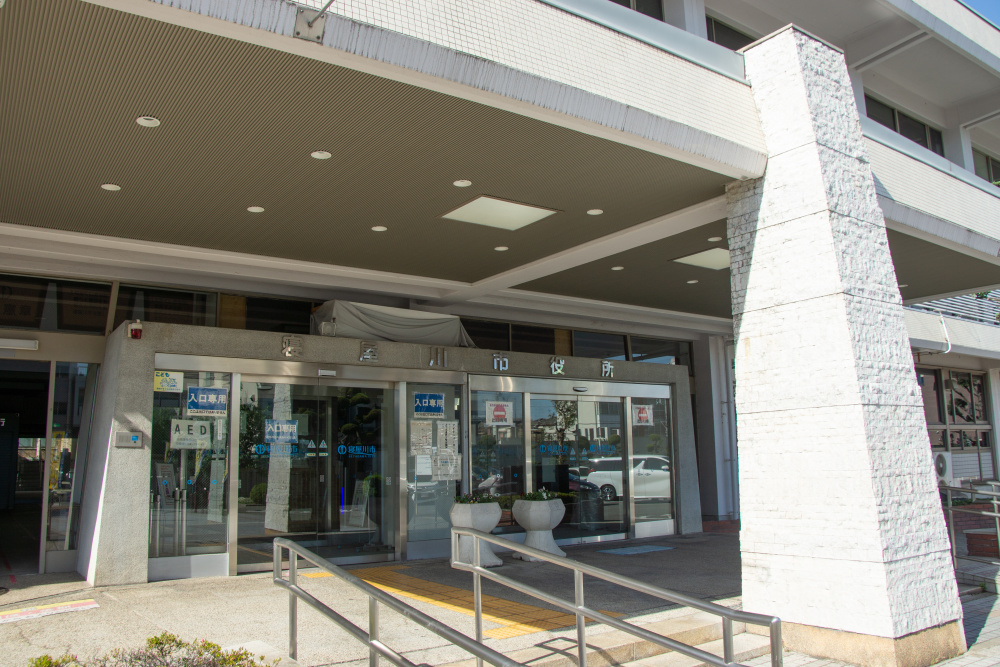
Kicking things off with the most basic method of obtaining a copy of your Juminhyo, your first option is to go to your local city office and request the copy there in person.
However, some minor preparation may still be required beforehand, as simply showing up at the municipality might not be enough. So, let me take you through the whole process step-by-step.
Find Your City Office’s Official Website and Download The Form
Before you start, it’s a good idea to find your local government’s official website and check to see if there are special rules or requirements regarding the process. This is also where you’ll download the application form you must complete.
Some municipalities offer English language support so applicants can fill it out directly on their websites, but if yours doesn’t and you don’t speak any Japanese, you can navigate the site using a translation extension. On that note, if you’re curious to know whether English is spoken widely in Japan, check out my post on the subject.
Alternatively, if you want to start your Japanese learning journey right away, you can also see my guide for the best Japanese learning tools. Learning Japanese will remedy all of the language-related issues you may face in Japan in the future, so the best time to start is now.
Fill Out The Application Form
If the official website of your local government has an application form, you’ll need to fill it out before you go to the city hall. If not, you can find them available at your local city hall and do it on the spot.
If you live in Tokyo, you can find online guides that’ll help you to fill out the form, as there are many foreigners living here, but if you’re from a smaller city, you may be out of luck.
If this is the case, however, I recommend filling out another city’s form you can find in English as best as you can, and the person who will accept your application should help you prepare the right one on sight.
Show Up At The City Office With A Valid ID
With your completed application form, make your way to your local city office and bring a valid form of identification, just in case. I recommend having your passport, driver’s license, My Number Card, or your Residence Card at hand.
Once you submit your application at the city office and pay the fee of about 300 JPY, your copy of Juminhyo will be issued and handed to you immediately.
Method #2 For Getting A Juminhyo Issued: At The Convenience Store
Now, onto the arguably the most convenient way to get a Juminhyo copy issued: at a convenience store! This option may not be available everywhere, but it’s pretty common, as more than half the municipalities in Japan have this system enabled.
Here’s a link to check whether this document is issued at convenience stores in your town. As navigating the kiosks can be tricky, I’ll guide you through each step using the pictures below. The interface you’ll have to use varies depending on the store, but the descriptions below should help you either way.
Make sure to have your My Number Card at hand, and let’s begin.
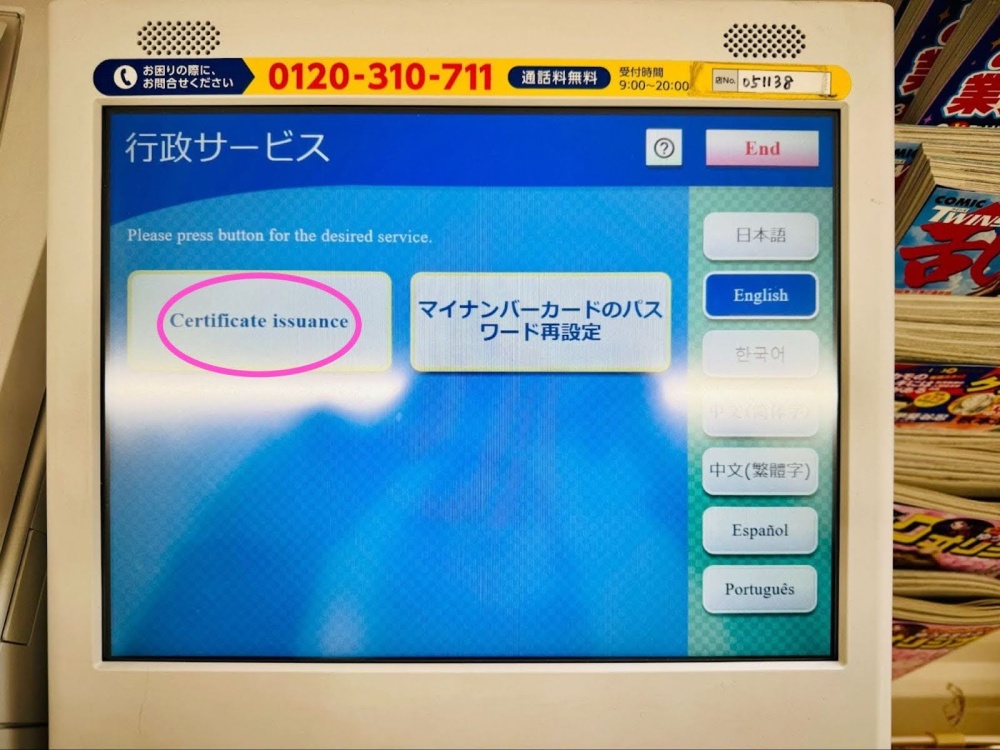
Step 1: First, select the “Certificate issuance” option. You can change the interface language to English here to make the process easier.
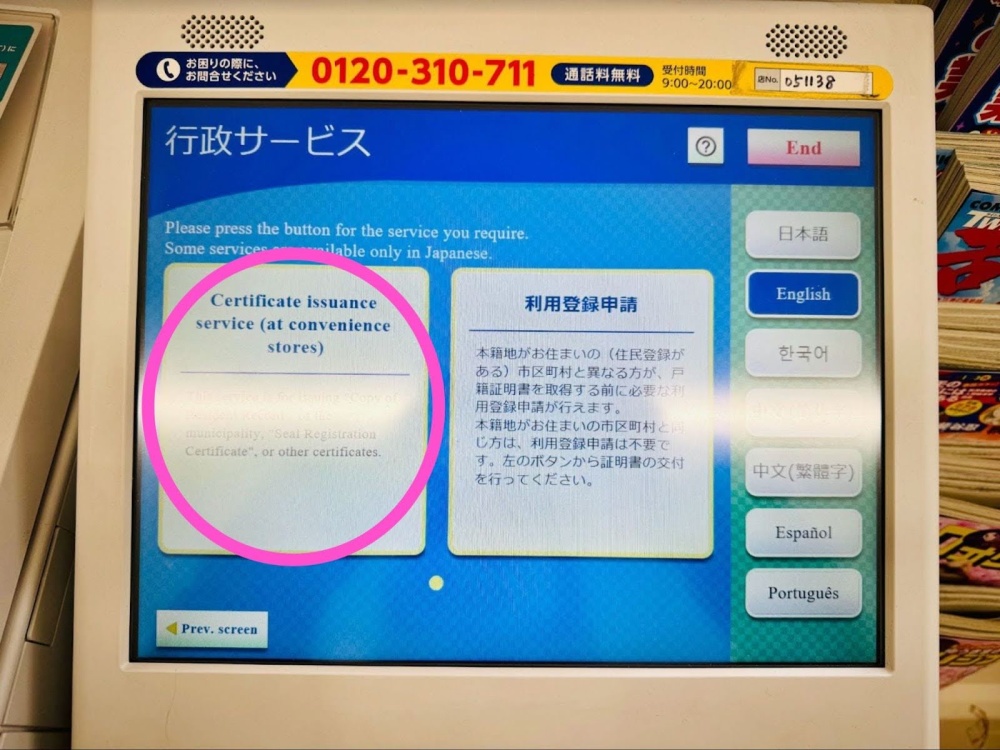
Step 2: You’ll be presented with two options: to have a certificate or official document issued or to apply for user registration. Select the first option, like in the image above.
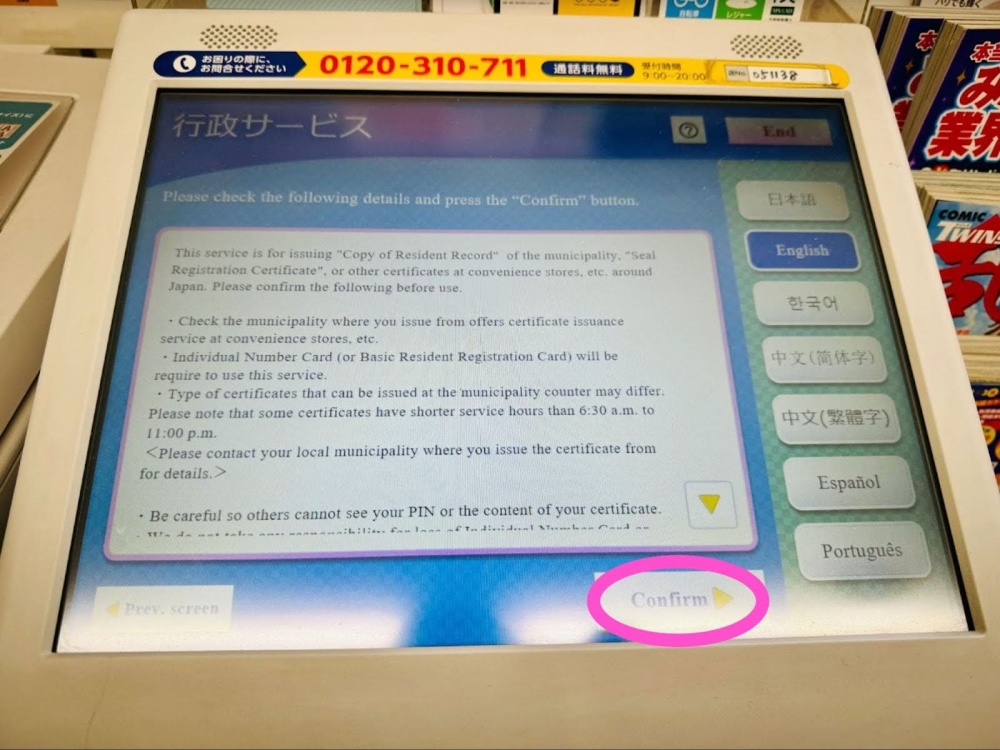
Step 3: The terms and conditions are presented in a scrollable fashion, and all you need to do is click “Confirm.”
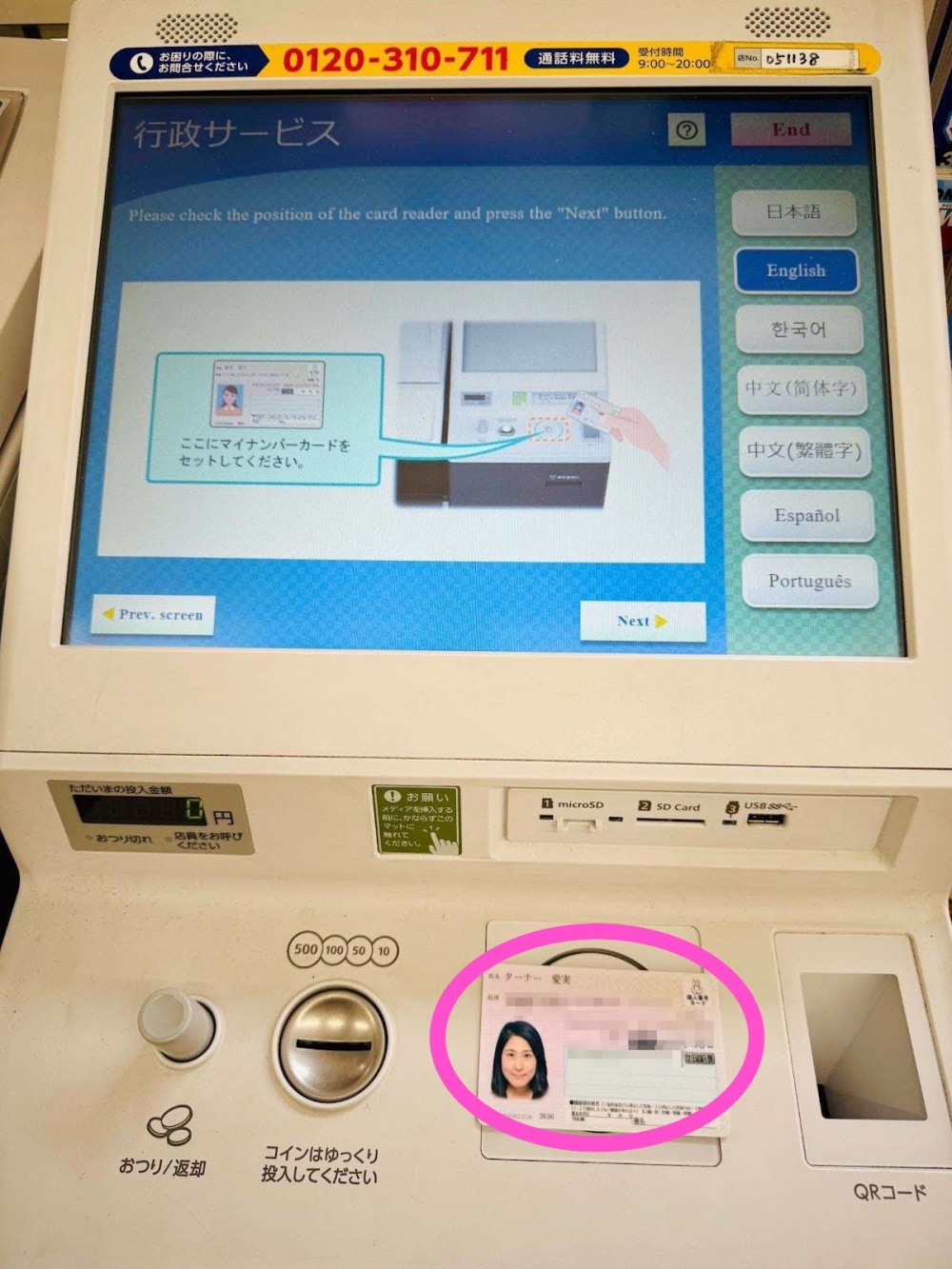
Step 4: On the kiosk, you’ll either find a flat surface, as in the image above, or a slot to insert your My Number Card. Present your card to verify your identity.
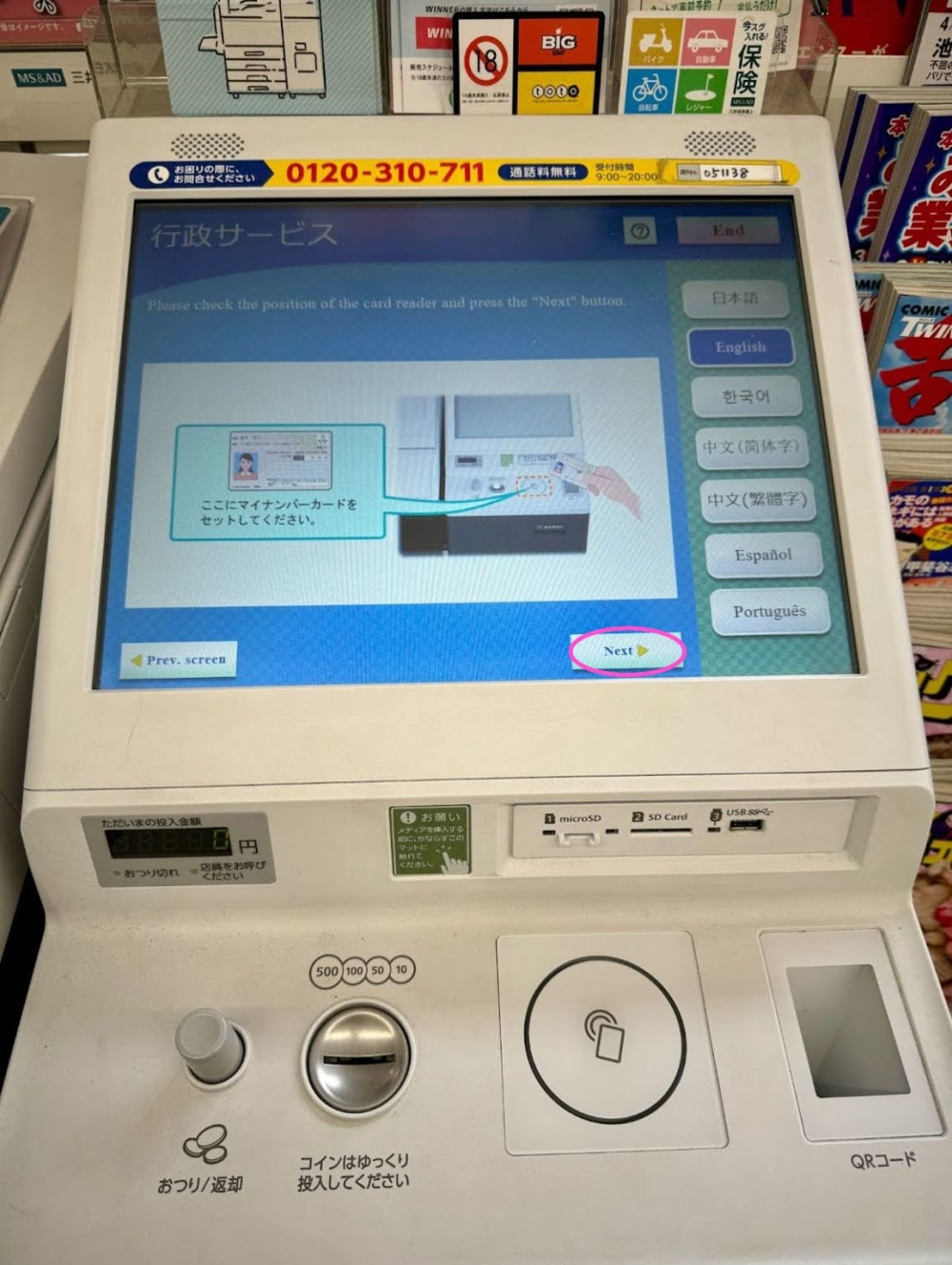
Once you place your card correctly, as shown in the image on the kiosk, you can click “Next.”
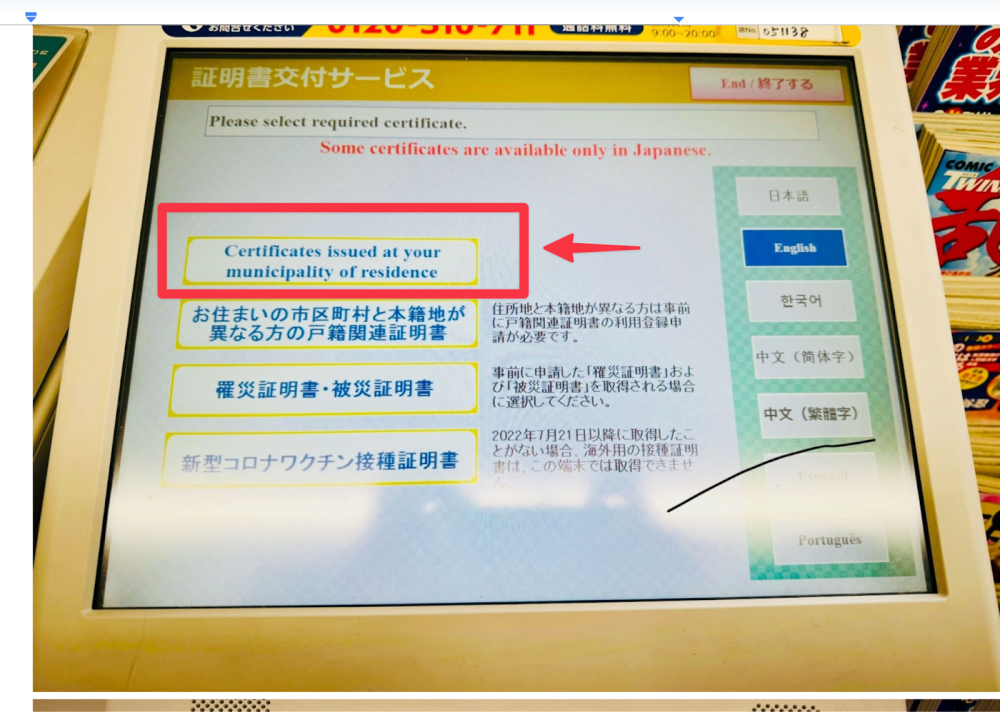
Step 5: Next, you’ll have the option to request documents from the municipality you reside in or from other municipalities. To continue, click on “certificates issued at your municipality of residence.”
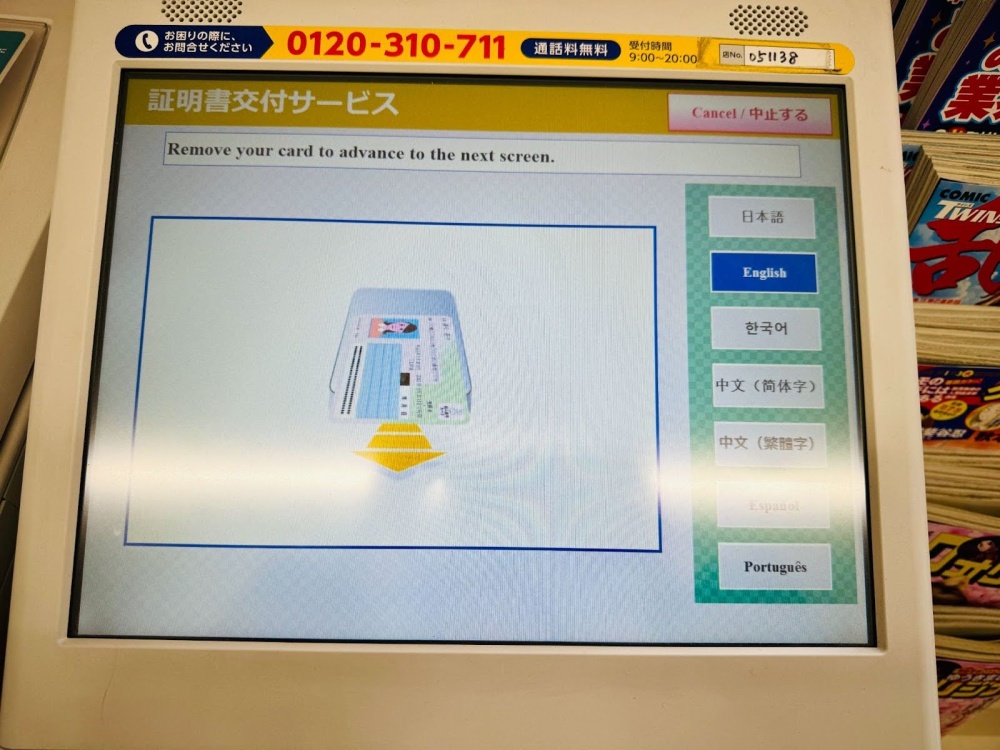
Once it’s verified by the kiosk, you’ll be asked to take your card back.
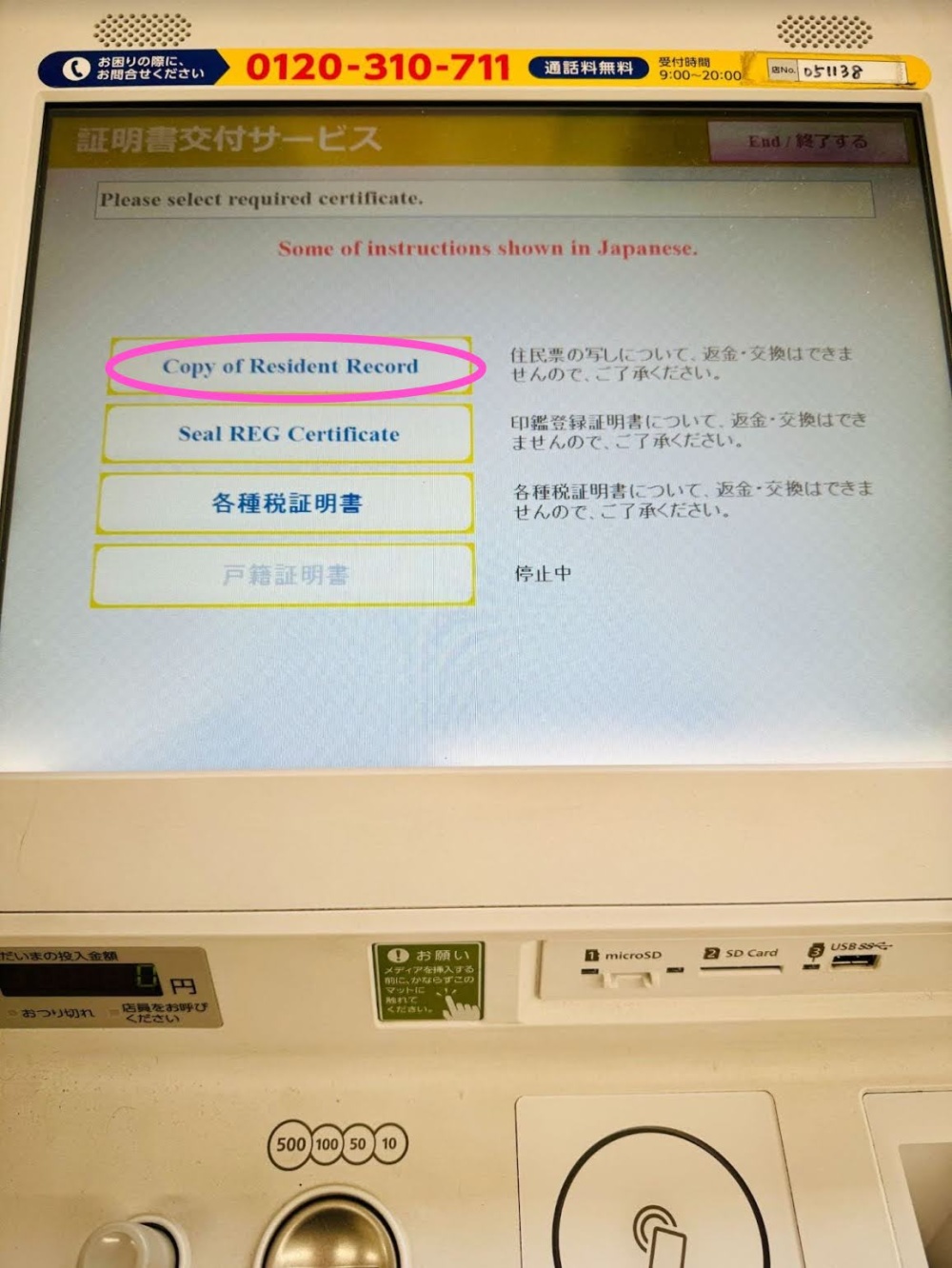
Step 6: Select “Copy of Resident Record.”
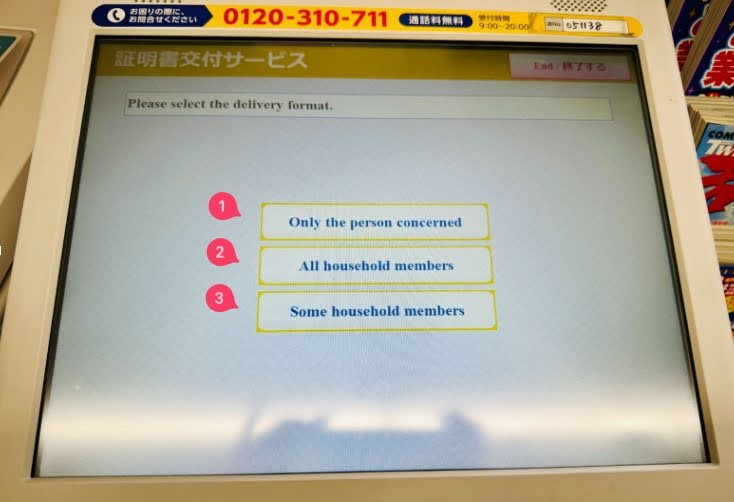
Step 7: Select the people you want to include on your Residence Certificate. Your options are:
Only the person concerned (corresponds to the MyNumber card)
All of your household members
Some of your household members

Step 8: You’ll be presented with three yes/no questions. Here’s what each one means:
You can list information about the head of your household on the document (i.e., yourself, your spouse, etc.) — We generally recommend including this.
This is your Family Registry information — We generally recommend selecting “yes”, although not everyone will have a family registry.
Unless you are asked to provide your Individual Number (MyNumber), we recommend selecting “No”.
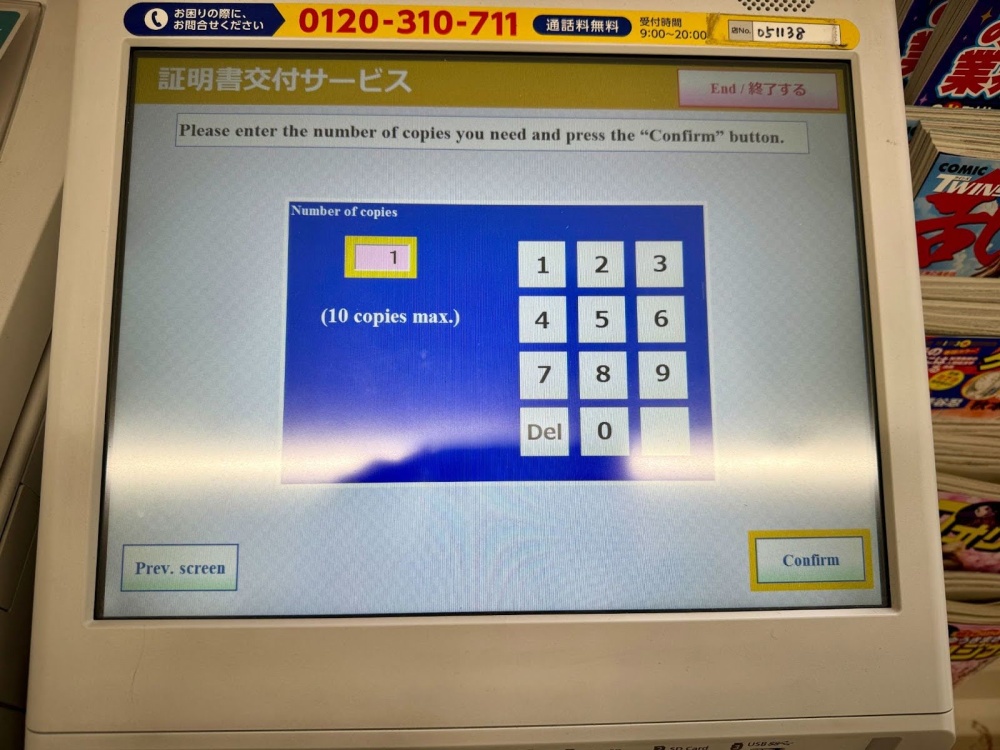
Step 9: Enter the number of copies you want.

Step 10: You’ll have a chance to preview the document before it’s issued. Make sure everything is in order, and click “confirm.”

Step 11: Pay the fee as shown on the screen, and select “print.” Your document will be issued immediately, and you can pick it up as shown on the screen.
Method #3 For Getting A Juminhyo Issued: By Mail
The final method to get a copy of your residence record issued is by mailing in your application. While this is possible for most cities, some municipalities don’t offer this service, so make sure to check beforehand.
Here’s the step-by-step.
Download and Fill Out The Application Form
Once again, locate your local government’s official website, where you’ll find all the relevant information regarding requesting a copy of Juminhyo, along with the application form.
If you’re not living in Tokyo or another big city where you have access to English explanations on how to fill out the form, however, this method may be challenging. As you’ll be sending the finished form by mail, there’s not much room for error.
Prepare A Copy Of Your Valid ID and Pay The Fee
Similar to the first method, you need to present a valid form of identification, such as your driver’s license, My Number Card, residence card, or health insurance card. So, attach a copy of one of these documents to your application form, as specified by your local government office.
Before sending it, remember that you also need to pay the fee by postal money order which you can get at a Japan Post Office– see this link for more information. The fee shouldn’t be more than 300 JPY, but check your city office’s website to be sure.
Send The Application By Mail
Upon paying the fee and getting your postal money order voucher, you can place your documents in an envelope and post it. On the website of your local city office, you might also find special envelopes you can download, and these are great because they have no postage fees.
So, make sure to check for the envelope on the website, along with any other information you may need, like the address.
Also, keep in mind that you need to have a return envelope included as well, complete with a stamp and your relevant information. Once you send the application in, you can expect your requested document to arrive within 10 days.
Final Word on Resident Records
As you see, getting your resident records issued is a breeze.
There are multiple options to obtain it in person, digitally on a kiosk, and by mail. However, if you’re in a rush, the fastest way, which we recommend, is via a kiosk at a convenience store. This may not always be an option, but it’s pretty common.
While this is all on resident records, check out my other posts to learn about other official processes like getting your driver’s license or submitting your year-end tax adjustments.
Get Job Alerts
Sign up for our newsletter to get hand-picked tech jobs in Japan – straight to your inbox.








